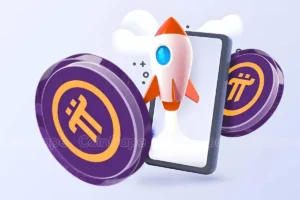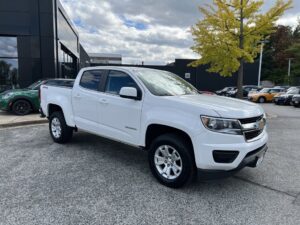How Funnel Builders Work with Facebook Ads
Warning: Attempt to read property "post_excerpt" on null in /home/u579354370/domains/techywoldnews.com/public_html/wp-content/themes/newsphere/inc/hooks/hook-single-header.php on line 67
Facebook Ads have become one of the most powerful tools in digital marketing. With over 3 billion users, the platform provides businesses with an opportunity to reach highly targeted audiences. However, running ads alone isn’t enough to convert cold traffic into paying customers. This is where funnel builders come in. Funnel builders create a structured process that guides prospects through different stages of awareness, interest, decision, and action. When combined with Facebook Ads, funnel builders help maximize ROI, reduce wasted ad spend, and drive scalable sales.
Understanding the Role of Funnel Builders
A funnel builder is a tool or software that allows marketers to create a funnel in sales—a series of steps that lead a visitor from discovery to conversion. These tools often come with templates for landing pages, opt-in forms, email sequences, order forms, upsell pages, and thank-you pages. Popular funnel builders include ClickFunnels, Systeme.io, Leadpages, and Kartra.
The goal of a funnel builder is to streamline the buyer’s journey. Rather than sending Facebook ad traffic directly to a homepage, which may confuse or overwhelm users, funnel builders direct them through a focused, intentional path designed to educate and convert.
Why You Shouldn’t Send Facebook Ad Traffic to Your Homepage
Many businesses make the mistake of linking Facebook Ads to their website’s homepage. This is problematic for a few reasons:
- The homepage is often not specific enough to the ad message.
- Visitors may get distracted by various links and options.
- There’s usually no clear call-to-action or lead capture strategy.
Instead, by using a funnel builder, marketers can send traffic to a custom landing page that directly aligns with the Facebook ad. This improves conversion rates and ensures that users know exactly what action to take next.
How Funnel Builders Work with Facebook Ads
Step 1: Creating a Targeted Facebook Ad
The process starts with a well-crafted Facebook ad. This includes:
- A compelling image or video
- Clear and persuasive copy
- A strong call-to-action (CTA)
- Defined targeting (based on interests, behaviors, demographics, or custom audiences)
The ad should speak directly to a problem your target audience is facing and hint at a solution—your offer, which will be presented in the funnel.
Step 2: Sending Traffic to a Landing Page
Once users click on the ad, they’re taken to a landing page built with a funnel builder. This page should:
- Match the message of the ad
- Be visually engaging and mobile-friendly
- Have one clear call-to-action (e.g., enter email, register, buy now)
- Remove distractions (no top navigation, minimal links)
The landing page is typically the top of the funnel in sales, also known as the awareness or lead capture stage. Its job is to collect user information or drive an initial action.
Step 3: Lead Capture and Nurturing
If the goal is to collect emails or sign-ups, the funnel builder allows marketers to:
- Store emails in an integrated autoresponder or CRM
- Trigger automated follow-up sequences
- Deliver lead magnets like eBooks, checklists, or webinars
This nurturing process helps warm up cold leads from Facebook who aren’t ready to buy immediately. It builds trust and positions your brand as the solution to their problem.
Step 4: Driving Sales Through the Funnel
After capturing the lead, funnel builders guide the user through more stages of the funnel:
- A bridge page explaining the offer or introducing the product
- A sales page with testimonials, benefits, and a purchase button
- An order form page optimized for conversions
- Optional upsell or downsell pages to increase average order value
- A thank-you page confirming the purchase and setting expectations
Each step in the funnel is designed with psychology and conversion principles in mind. The smoother the journey, the higher the likelihood of turning Facebook ad clicks into paying customers.
Step 5: Tracking and Optimization
One of the most powerful features of using funnel builders with Facebook Ads is tracking and optimization. Funnel builders can be integrated with Facebook Pixel and custom events, allowing marketers to:
- Track which ads generate leads or sales
- Measure cost per conversion
- Retarget users who drop off at different stages
- A/B test landing pages and funnels to improve results
This data is critical for improving campaign performance and scaling winning funnels.
Real-World Example of a Funnel in Sales with Facebook Ads
Let’s say you sell online fitness coaching. Here’s how a funnel builder would work with Facebook Ads:
- Facebook Ad: A video of a client transformation with a CTA: “Want to lose 10kg in 90 days? Join our free fitness challenge.”
- Landing Page: A page with the headline “Free 90-Day Fat Loss Challenge – Spots Limited!” Users enter their email to join.
- Email Sequence: Users receive a welcome email and daily motivation plus training tips.
- Sales Page: After a few days, users are sent to a page offering a premium coaching program.
- Upsell Page: Once they purchase, they’re offered an additional one-on-one coaching session at a discount.
- Thank-You Page: Confirms enrollment and introduces them to the coaching platform.
Each of these steps is crafted using a funnel builder and designed to match the user’s journey from interest to action.
Benefits of Using Funnel Builders with Facebook Ads
- Higher Conversion Rates: Customized funnels increase the chance that a user will convert compared to sending them to a generic page.
- Lower Ad Costs: Better-performing funnels lead to a lower cost per lead or acquisition.
- Scalability: Once a funnel proves successful, you can scale your ad budget and sales with predictable results.
- Lead Segmentation: Funnel builders often allow you to tag and segment leads, allowing for personalized follow-up.
- Speed and Efficiency: Templates and drag-and-drop features enable faster deployment of campaigns.
Common Mistakes to Avoid
- Not testing funnel steps individually: Every stage of your funnel should be tested for performance.
- Inconsistent messaging: Make sure your ad, landing page, and offer align perfectly.
- Neglecting mobile users: Most Facebook traffic is mobile—ensure your funnel is mobile-optimized.
- Failing to follow up: If you capture leads but don’t nurture them, you lose potential sales.
Conclusion
Combining Facebook Ads with funnel builders is one of the smartest strategies in digital marketing. It allows you to guide users through a carefully planned journey that reflects the stages of a funnel in sales, from awareness to purchase. By leveraging this approach, you can transform cold traffic into warm leads and ultimately into loyal customers. Whether you’re a solopreneur or running an agency, understanding how funnel builders work with Facebook Ads is key to achieving scalable and sustainable growth.



